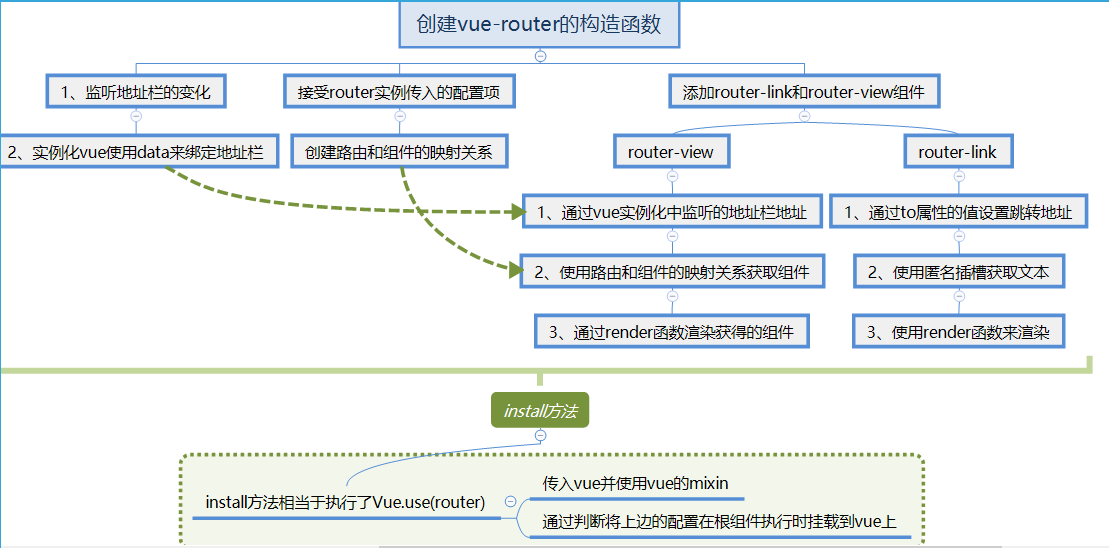vue-router简易的实现原理
class VueRouter { constructor(options) { this.$options = options; this.routeMap = {}; // 路由响应式 this.app = new Vue({ data: { current: "/" } }); } i nit() { this.bindEvents(); //监听url变化 this.createRouteMap(this.$options); //解析路由配置 this.initComponent(); // 实现两个组件 } b indEvents() { window.addEventListener("load", this.onHashChange.bind(this)); window.addEventListener("hashchange", this.onHashChange.bind(this)); } o nHashChange() { this.app.current = window.location.hash.slice(1) || "/"; } c reateRouteMap(options) { options.routes.forEach(item => { this.routeMap[item.path] = item.component; }); } i nitComponent() { // router-link,router-view // <router-link to="">fff</router-link> Vue.component("router-link", { props: { to: String }, render(h) { // h(tag, data, children) return h("a", { attrs: { href: "#" + this.to } }, [ this.$slots.default ]); } }); // <router-view></router-view> Vue.component("router-view", { render: h => { const comp = this.routeMap[this.app.current]; return h(comp); } }); } } V ueRouter.install = function (Vue) { // 混入 Vue.mixin({ beforeCreate() { // this是Vue实例 if (this.$options.router) { // 仅在根组件执行一次 Vue.prototype.$router = this.$options.router; this.$options.router.init(); } } }); };
以上是简易的实现过程,一下是我整理了一份思路导图




